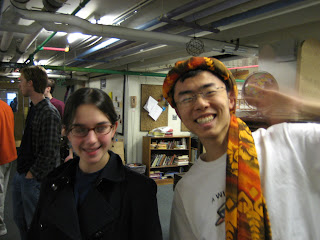
Okay, the
Lotus Elise isn't exactly a new car; in fact, it was announced back in 2000. And it's not particularly efficient either, with an EPA fuel economy of 24/29 (city/highway). Plus, it was built to be a race car. So what is it doing here?
First, let's take a closer look at the Elise. At its heart lies a four-cylinder Toyota
2ZZ-GE engine producing 190 hp @ 7600 rpm and 130 lb-ft of torque at 6800 rpm. It is the same engine used in several Toyota Corollas, Matrix (Matricies?), and Celicas, and propels the Elise from 0-60 mph in about 4 seconds. The mid-mounted engine is mated to a 6-speed manual transmission driving the rear wheels. But the Elise's trump card is its anemic weight of 1930 lbs, resulting in a power to weight ratio rivaling Ferraris and Lamborghinis. With less mass to scoot around corners, the Elise's handling is superb (lateral acceleration of 0.97 g).
The idea behind the Lotus Elise is very simple: the lower the weight, the less power you need to propel it. With cars gaining weight as fast as Americans are gaining weight, this principle can and should be applied to making fuel-efficient cars. What if, for example, someone replaced the Toyota engine with a less-powerful but more efficient engine? It'd probably run with Toyota Camry-performance, but use much less fuel. What if that someone forwent gasoline and put in an electric motor? Well, it'd look awfully similar to the
Tesla Roadster.
Granted, the only incentive to pay more for a car with a spartan interior (minimal upholstering & carpeting, passenger seats are unadjustable, minimal sound dampening material) is for its incredible performance and handling characteristics. An Elise with 70 hp will probably appeal to an extremely small number of people. The Lotus Elise, though, is undeniably a weight-saving engineering masterpiece.
Read how the Elise works at
HowStuffWorks








































